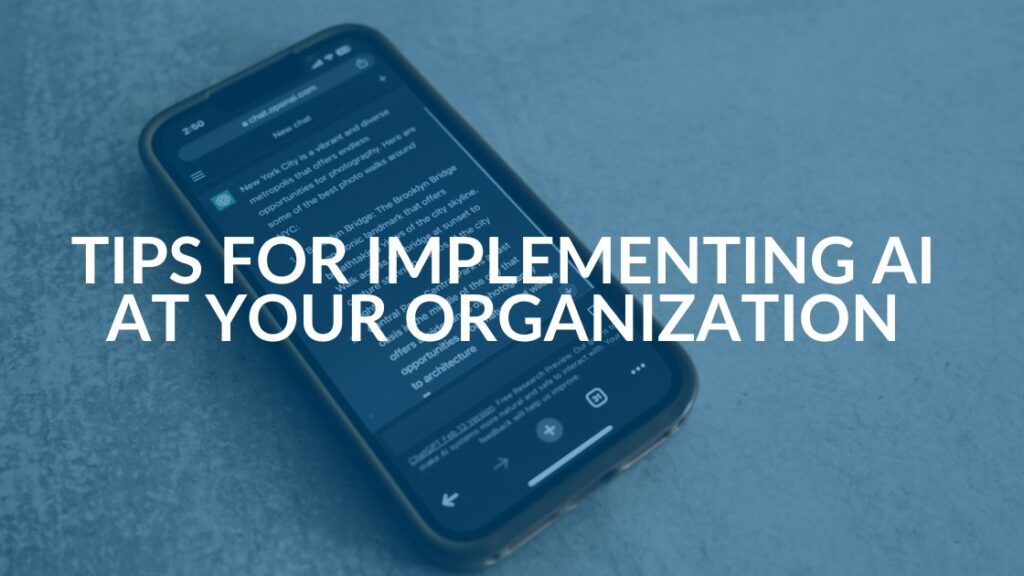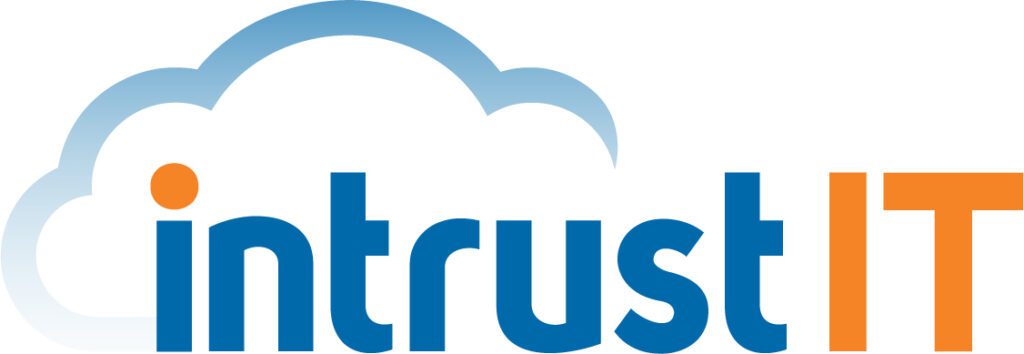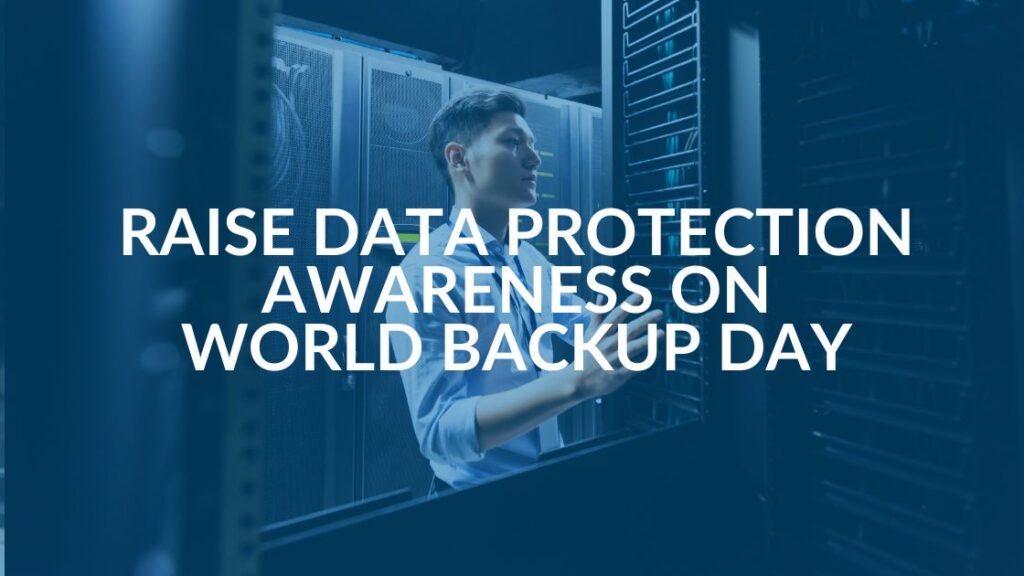Information Technology Infrastructure Overview: Building a Resilient Digital Backbone

Information technology (IT) infrastructure is the silent powerhouse that keeps business operations moving seamlessly and efficiently. From enabling daily workflows to supporting long-term growth strategies, IT infrastructure helps organizations remain secure, productive and adaptable in today’s increasingly fast-paced and competitive environment.
At Intrust IT, we understand that a well-designed IT infrastructure ensures operational efficiency, scalability and security through advanced technologies, best practices, automation, resiliancy and cybersecurity protection.
This overview encompasses all the ways a healthy IT infrastructure can enable your organization to adapt to evolving technological demands and market challenges which will allow your organization to thrive in today’s fast paced business climate.
What Is Information Technology Infrastructure? (Key Components)
IT infrastructure encompasses all the hardware, software, networks and facilities that deliver an organization’s IT services. It supports essential operations such as data storage, communications, application management and cybersecurity. By leveraging advanced technology, an IT infrastructure streamlines workflows and enhances productivity while reducing cost and risk.
At its core, IT infrastructure consists of two types:
- Traditional infrastructure: Relies on physical equipment and on-premises systems.
- Cloud infrastructure: Relies on virtual resources hosted on external servers and platforms, aka “The Cloud”.
- Hybrid infrastructure: Uses a combination of on-premises and cloud infrastructure.
Many organizations choose to adopt a hybrid model for greater flexibility. Regardless of the model, a robust IT infrastructure integrates several key components that work together to deliver seamless and reliable IT services, including:
- Hardware: The physical backbone of IT infrastructure, hardware includes devices such as servers, computers, storage devices and networking equipment (firewalls, switches, etc.). These components process, store and transmit data to support critical operations and communication.
- Software: According to Encyclopedia Britannica, software is “instructions that tell a computer what to do”. Software Integrates with hardware to execute specific tasks and manage resources. Operating systems, enterprise applications, apps, databases and cybersecurity tools are essential for running day-to-day business activities and safeguarding sensitive business information.
- Networking: Connects all components of the infrastructure, enabling seamless communication and data exchange. This includes local area networks (LANs), wide area networks (WANs), virtual private networks (VPNs) and the Internet for secure and dependable connectivity.
- Data storage: Ranges from on-premises servers to cloud platforms that house an organization’s information. Advanced storage systems provide scalability, redundancy and resiliency, ensuring data integrity and availability.
- Facilities: Physical environments, such as data centers, provide controlled and managed environments that house IT equipment. These facilities require constant monitoring, power backups and climate control to maintain system integrity and uptime.
Why IT Infrastructure Matters
IT infrastructure is essential for driving operational success. It ensures seamless communication across teams and systems, while also enabling faster decision-making through real-time data analysis and availability. Furthermore, it supports innovation by providing scalable and secure platforms that help an organization be more efficient and more effective at less cost.
There are many benefits to having a healthy information technology infrastructure, including:
- Operational efficiency: Well-designed systems reduce bottlenecks, improve communication and streamline processes.
- Scalability: Modern IT infrastructures are built to adapt, accommodating organizational growth without disruption and at minimal expense.
- Security: Advanced firewalls, anti-virus, encryption and monitoring tools protect against cyber threats and data breaches.
- Business continuity: Backup systems and disaster recovery plans ensure minimal downtime during unexpected events.
- Cost optimization: Efficient infrastructure reduces overhead expenses and improves resource utilization.
Understanding Emerging Trends in IT Infrastructure
In this information technology overview, we explore the different trends in IT to introduce new solutions that address modern business challenges and opportunities, such as:
Cloud Computing
IT spending on public cloud services continues to rise at a rapid rate. A 2023 Gartner report indicates that worldwide end-user spending on public cloud services is forecast to total $679 billion in 2024 and is projected to exceed $1 trillion in 2027. This not only signifies that the adoption of cloud infrastructure continues to grow, offering flexibility, scalability and cost-efficiency, but that organizations increasingly rely on cloud solutions for a reliable approach to data storage.
Edge Computing
Edge computing processes data closer to its source, such as at sensors or machinery, reducing latency and improving response times. This is particularly valuable for industries like healthcare and manufacturing.
Sustainability (Green Computing)
Green IT initiatives aim to reduce energy consumption and minimize environmental impact, promoting eco-friendly practices through energy-efficient hardware and sustainable data centers.
Automation and Artificial Intelligence (AI)
Automation tools and artificial intelligence streamline infrastructure management by reducing manual workloads, identifying inefficiencies and enabling predictive maintenance. These technologies also enhance security by detecting anomalies in real time and deploying automated responses to potential threats.
Information Technology Infrastructure Challenges
While IT infrastructure provides immense benefits, managing it effectively is not without challenges:
- Cost management: Balancing budget constraints with the need for advanced technology can be difficult for organizations of all sizes. Prudent investments are key.
- Cybersecurity threats: The growing sophistication and increasing number of cyberattacks requires constant vigilance and robust multi-layer defenses.
- Legacy systems: Outdated infrastructure can limit scalability and performance, necessitating upgrades to remain competitive.
- Technical debt: Technical debt accumulates when we prioritize speed or cost over quality, leading to quick fixes or the avoidance of issues that need to be addressed. Over time, this debt makes the system harder to maintain, slows down new feature development and increases the risk of problems. The real issue with technical debt isn’t the debt itself but neglecting to manage or pay it down eventually leading to a massive overhaul that can drain resources, time, and morale. Legacy systems are a type of technical debt.
Organizations must continually assess their IT infrastructure and adopt proactive strategies to address these challenges.
Best Practices for Building a Strong IT Infrastructure
By staying proactive and addressing potential challenges head-on, organizations can build a foundation that supports innovation and long-term growth with:
- Regular assessments: Evaluate current systems to identify weaknesses, outdated components, technical debt and areas for improvement.
- Strategic planning: IT infrastructures should be designed with scalability and future needs in mind, ensuring they can handle growth and evolving technologies.
- Cybersecurity: Implement multi-layered security measures, including firewalls, endpoint protection, multi-factor authentication (MFA), and employee training to safeguard against threats.
- Partner with experts: Partnering with managed service providers (MSPs) can provide specialized expertise and advanced solutions tailored to organizational needs.
- Emerging technologies: Stay ahead of trends by adopting emerging technologies such as AI-driven automation and sustainable IT practices.
A robust IT infrastructure is the engine that drives organizational innovation and success. By integrating cutting-edge technologies, addressing potential vulnerabilities and planning for scalability, organizations can create a foundation that supports current operations and future growth. As technology evolves, staying proactive and adaptable will ensure your IT infrastructure remains a valuable asset for your organization for years to come.
Ready to enhance your IT infrastructure? At Intrust IT, we take businesses to the next level with long-term growth strategies that leverage advanced technologies, implement industry best practices and increase productivity. Contact us today to get started on improving IT for your organization.
Share this Blog

Is Your Name or Birthday a Part of Your Password?
If so, you’re a part of the 59 percent of people who don’t follow proper password hygiene. More than 70 percent of passwords are used for more than one system, meaning if cybercriminals crack one, they can access a lot more accounts.
Our free Enterprise Password Management Guide will give you the best password hygiene practices to help you secure your computer and your business.
Download the Guide
Explore the Latest Trends in IT

Microsoft 365 and Google Workspace: The Importance of Backing Up Your Cloud-Based Applications

AI Guiding Principles

Edge vs Chrome Security: Which Is the Best Browser for Your Business?




